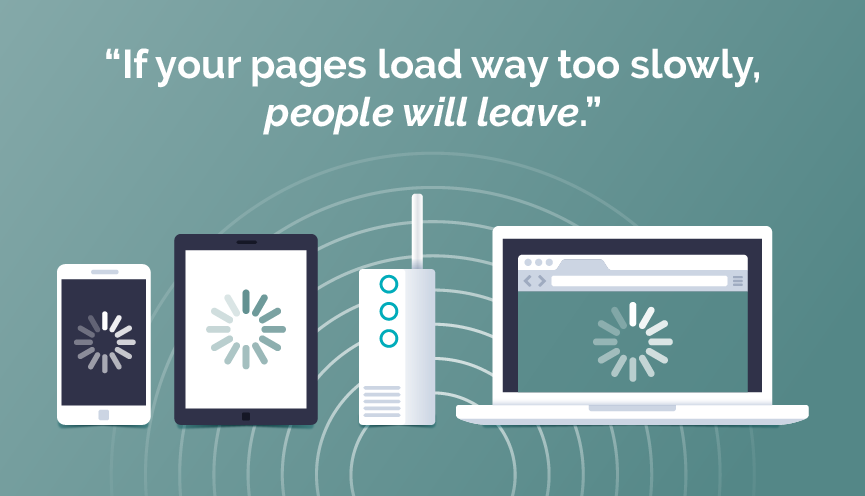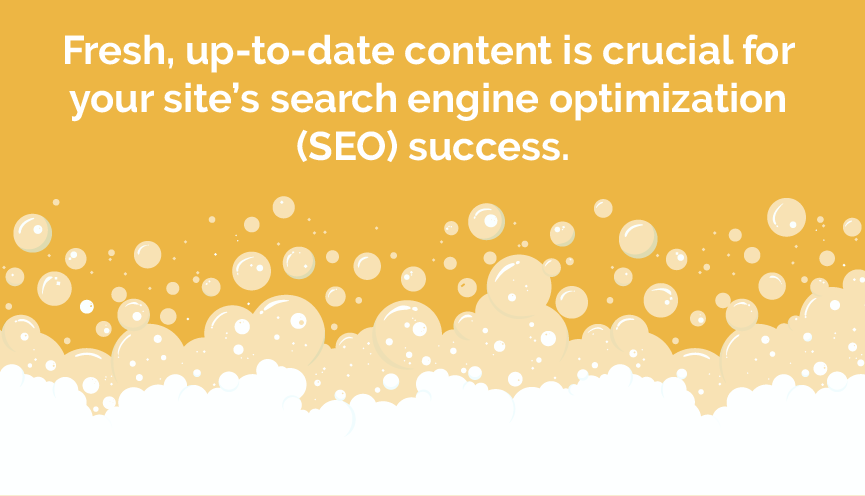You put a lot of time and effort into creating your website. You want visitors to spend time checking it out, learning about what your brand does, and, ideally, taking the next step. But a quick look at your stats reveals that people come to your site and quickly leave. Your bounce rate is high, way too high. Bounce rate refers to the number of people who navigate to your site only to leave super fast.
Google Analytics 4 (GA4) refers to bounce rate as the number of sessions that weren’t engaged. Under the new definition, someone “bounces” from your site if they spend less than 10 seconds on it and don’t take any further actions, like clicking on another page.
There’s no single answer to the question of: what a good bounce rate is. But one thing is for sure. You want people engaged with your site for as long as possible so you win fans and, ideally, customers.
Want to get to that sweet spot where visitors browse your site for more information? Here are our seven insider tips on how to reduce bounce rates:
1. Fix Tech Issues
The tech side of your website affects user experience in a big way. If your pages load way too slowly, people will leave. If the site’s formatting is unattractive or hard to read, people will leave.
Tech issues are particularly important for your mobile users. If your site isn’t optimized to be mobile-friendly, and a visitor uses a smartphone or tablet to view it, they won’t have the best experience. They may have to pinch and drag to read what’s on the screen, and that’s no fun.
Test your website often to keep your bounce rate low. Make sure it loads quickly and smoothly and looks good on mobile and desktop devices. Also review the layout and format of the site to ensure it’s user-friendly and intuitive.
2. Deliver on Your Promises
Your bounce rate may be higher than you want because your website promises one thing, then does another. For example, if a visitor clicks on a Pay-Per-Click (PPC) ad in hopes of one thing, landing on your site, only to discover something completely unrelated to their needs, they’re without a doubt not sticking around.
Not only are you doing yourself a disservice and increasing your own bounce rate, but you’re wasting your PPC campaign funds on an audience that isn’t interested in what you have to offer. That’s why you need to know the type of people you want to attract and use the right keywords and phrases to bring them in. And once they get to your site, you must ensure that the content they find there is relevant to their search and question.
3. Give Your Site a Makeover
You know what they say: First impressions last the longest. We’re not saying your landing pages are currently unattractive. But, we are saying it could be possible to improve their appearance and make them even more engaging. Sometimes, something as simple as a different color scheme or graphic can encourage people to stick around a little longer.
To really understand how to reduce bounce rates, we recommend doing A/B testing with tools like Optimizely. Try fresh content, upgraded images, and alternate layouts to see which ones get the lowest bounce rate. You can also look at your top competitors to see what works for them and then make it your own.
4. Get Interactive
In GA4, the bounce rate merges with the engagement rate. To keep your bounce rate low and your engagement rate high, you need to keep visitors on your site for at least 10 seconds. Ideally, you want them to do something else while on your site, like navigate to a new page or click on a tool.
One way to keep them on your site is to interact with them, and there are plenty of options to do just that. For example, including at least one video on the page is a quick and easy option. Make the video relevant to the content by uploading a quick explainer of the page’s topic or adding a video tutorial to show people how to do something.
Consider adding other interactive elements, too, such as a quiz that helps people discover something about themselves (as it relates to your brand) or a calculator.
5. Incorporate Inbound Links
You may know your website inside and out, but that doesn’t mean every visitor will. Be their tour guide with friendly suggestions that include inbound links to other pages on your website. For example, you could say, “To learn more, check out our services page,” or “If you thought this blog was amazing, you will want to read this too.”
6. Keep Your Content Fresh
Fresh, up-to-date content is crucial for your site’s search engine optimization (SEO) success. It’s also a critical part of the user experience. If someone lands on your page and notices the content looks outdated, they’re right to question its accuracy. Does your brand even offer this particular service anymore? Is it really the most appropriate for their needs?
Every so often, visit your content and breathe new life into it. It can be as simple as updating dates, adding new statistics, or as complex as completing or rewriting a blog post or article.
7. Include a Call-to-Action
Lastly, learning how to reduce bounce rates may be as straightforward as asking for what you want. The average web browser needs a little nudge in the right direction, and it’s your job to give it to them. Make your conversion points (add to cart, sign up now, etc.) larger, and don’t be afraid of a strong call to action. Additionally, there have been many studies that show something as easy as changing the conversion button from black to red can make a difference in your bounce rate.
ZGM Can Help You Reduce Bounce Rates
Want to improve your bounce rate but still need to figure out where to start? Luckily, Zero Gravity Marketing knows how to increase your site’s engagement and keep your bounce rate as low as possible. Contact us today to see what our digital marketing experts can do for you.









